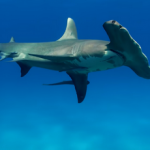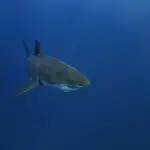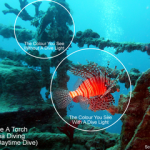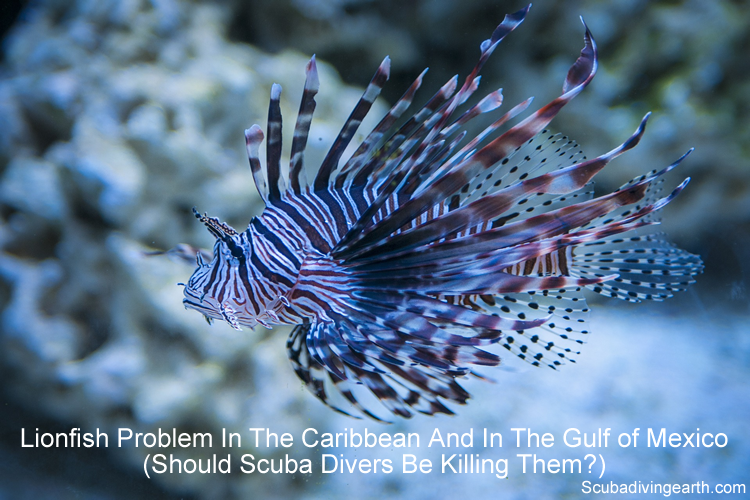
Lionfish problem in the Caribbean, Florida and in the Gulf of Mexico; Should scuba divers be killing them?
For those of you who haven’t yet dived the Caribbean, Florida or the Gulf of Mexico, or not done so for a while, the lionfish problem may be something you’re not yet aware of.
The lionfish problem in the Caribbean is spreading fast and getting worse. Non-native lionfish are invading the waters of the Western Atlantic Ocean (Florida and north to Carolina), the Caribbean Sea and the Gulf of Mexico.
What is the Lionfish problem in the Caribbean: The lionfish problem in the Caribbean is creating havoc for the native plants and animals. Also, whether you like it or not as a scuba diver, a snorkeler or as a conservationist, the invasive lionfish in the Caribbean are being slaughtered by scuba divers with spears to limit their numbers.
The best way to do more diving, whether that’s in the Caribbean por elsewhere in the world, is to book yourself on a scuba diving liveaboard. You can check the latest and best deals on liveaboards using the following window:
The invasive lionfish are out-breeding, out-competing and living longer than the native fish stocks and other marine species in the region. The native species the lionfish are decimating are important for ecological, commercial and recreational reasons.
This article considers whether it’s right to kill these creatures on spears as scuba divers. For me it goes against the grain for the usual conservationist nature of scuba divers, as lovers of all marine creatures.
But I will admit to joining a group of scuba divers that went on a culling exercise of lionfish.
Why do they call it a lionfish?
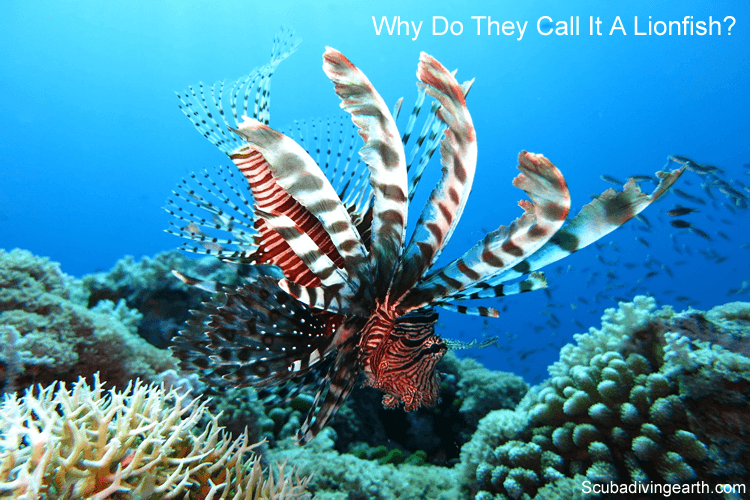
As you’ll see from the image above, a lionfish is a beautiful creature.
The reason why they call it a lionfish is because of the mane-like spines. When you first encounter a lionfish, you’ll first notice that it looks brown in colour.
The lionfish, or full name Red Lionfish, gets its name from the mane-like fins. These fins, which there are 18 in total, are venomous to touch.
However, it’s only when you shine an underwater dive torch on one (or if you see one at shallower depths where the sun’s rays still provide vivid colours), that you see its true colours. The predominant colour is a beautiful red, which is where it gets it full name, The Red Lionfish.
The mane-like spines are what make the lionfish venomous. However, these are not really spines, but needle-like dorsal, ventral and anal fins.
But unless you grab a lionfish, or if you were to accidentally bump into one when diving, you are unlikely to be stung by one.
Why are lionfish a problem and what are the problems caused by these invasive fish?
The proliferation of lionfish in the Caribbean, the Western Atlantic (Florida) and Gulf of Mexico is a real threat to the ecology of the region.
Lionfish are known to cause damage to coral reefs, sea grasses and mangroves. This is due to their high rate of reproduction and speed of growth. It is also because of the lionfish’s voracious feeding style and from the lack of predators.
Lionfish outgrow their native species with whom they compete for food. This is a real problem for native species of fish in the Caribbean.

How many eggs do lionfish lay?
Female lionfish can lay up to 2 million eggs per year. To produce this many eggs, a lionfish can reproduce every four days, throughout the year. And it takes less than a year for a lionfish to reach reproductive age.
Whereas with native species this period is more like 3-5 years before they can reproduce.
How are lionfish being controlled in the Caribbean?
The lionfish invasion is being controlled by human predation. Scuba divers are taking spears on dives to cull the population of lionfish.
There are now lionfish derbies and tournaments each year. The one in Barbados is in December each year, but there’s a lionfish derby in Florida, Sarasota, the Florida Keys, Bahamas and other places in the Caribbean.
I know from visiting Barbados over the last few years that the number of lionfish speared each year at the Barbados Lionfish Derby is increasing year on year.
Lionfish invasion of the Caribbean solution
The long term solution for the lionfish invasion is probably the continued culling process that’s already happening.
However, due to their sheer proliferation, how fast they reproduce and speed at which they grow, the lionfish are in the region to stay. It will be impossible to eradicate them now, partly due to the vast area they now inhabit.
The only option now is to limit their numbers by killing them for human consumption, and to hope that the ecosystem will balance itself out in the long term. Nature normal finds a way in the long run to solve man-made problems he introduces.
How were lionfish introduced to the Caribbean?
The myth is that lionfish were released in the Atlantic Ocean after an aquarium flooded during Hurricane Andrew in 1992.
However, it’s reported in National Geographic that lionfish were first spotted near Diana, Florida in 1985. So although this appears to be a more recent problem, lionfish have been in the region for quite some time.
It’s believed that lionfish were introduced through personal aquarium releases, where people’s lionfish became too big for the tank they were kept in. It is thought that the invasion can be narrowed to just eight to twelve individual lionfish that then interbred.
How was the lionfish introduced to Florida?
It is likely that lionfish were first introduced to Florida, and it was here that they’ve spread to other parts of the Western Atlantic region, the Caribbean and the Gulf of Mexico.
How do lionfish affect the ecosystem?
As with any non-native species that’s introduced to an unnatural habitat, the introduced species can reek havoc to the native species population. Also, as the lionfish is not native to the area, there tends not to be natural predators.
The ecosystem is also not set up to have an introduce predator, and as a result of the way the lionfish breeds, grows and feeds, this is putting pressure on the native species.
Do lionfish have any predators?
The natural lionfish predators include sharks, grouper and moray eels. Although this is typically only after a diver has offered them to these predators first.
I have been on dives where lionfish have been speared in Barbados. On a number of occasions the smaller lionfish, not destined for the meal table, were fed to moray eels. Moray eels love to eat them.
However, last year in Antigua I witnessed a fellow diver feed a reef shark with a lionfish that was on the end of his spear.
The diver had speared a fair sized lionfish, and soon afterwards a smallish reef shark appeared from the blue (approximately 4 foot in length).
Clearly the shark was attracted by the flailing fish on the spear, and it was intent on eating it. The scuba diver concerned, who like me also loves to scuba dive with sharks, was keen to offer this reef shark a meal.
Within the space of a few minutes, the shark made its move and grabbed the lionfish from the spear.
The inherent risk involved with teaching wild animals to expect a free meal when they see humans
On returning to the boat, whilst this experience was an amazing sight to see, the dive master said it wouldn’t be good to encourage this behaviour with sharks. She was worried it might cause further problems with divers in the future.
I had to agree with her. Whilst it was something I’d not witnessed before, and wished I caught it on camera or on film. I’ll possible not see this again.
As this does raises concerns due to the inherent risks involved with teaching wild animals to see humans and expect a free meal, especially when this involves sharks.
The real problem is that there are no rel native predators of lionfish in the region, other than humans. So it would seem to point to human predation of the lionfish is the only solution.
Do people eat lion fish?
People now eat lionfish, and they are increasingly on the menu in restaurants around the Caribbean. For example in Barbados its been about educating the locals. Which is about why they should be eaten and included on the menus.
The original misconception was that lionfish were poisonous, when in fact they are venomous. The only part of them that’s venomous is their spines.
Once you dispose of the spines, there’s no risk of envenomation. After the spines have been removed, the lionfish can be safely prepared, cooked and eaten.
I’ve eaten lionfish in Barbados and I have to say it’s extremely tasty. I would almost go as far as to say that lionfish is one of the best tasting fish that I’ve ever eaten.
On a positive note: Although lionfish are being slaughtered, they are being eaten. They’re not just being killed and left to rot.
The lionfish problem is then not just about the protection of the ecosystem. It’s also now about using them as a source of food.
With the increase in popularity from one year to the next. And with more restaurants serving lionfish on the menu. There’ll be more demand on their capture.
This will in itself will help to contain lionfish numbers.
Can a lionfish kill you?
I am led to believe that a sting from a lionfish is extremely painful to humans, but it’s rarely fatal.
The sting from a lionfish is rarely fatal but can be extremely painful and cash nausea and breathing difficulties.
So although I’ve seen hundreds of them on dives, mostly in the Red Sea (and now in the Caribbean), I’ve never been unfortunate to be stung by one.
The sting will be painful at the site of the wound and once the venom enters the blood stream, this can cause nausea and in some cases breathing difficulties.
How do you treat a lionfish sting?
Firstly, prevention is always better than cure. Try not to get stung in the first place and avoid contacting the lionfish’s spines.
The pain doesn’t come on immediately, but it’s important to act fast. If you get stung by a lionfish on your dive, let your dive buddy know what’s happened and abort the dive immediately. Return to the surface safely and by the usual safe diving practices.
If any of the spines are in your skin, these must be removed. Better still, remove these immediately at the time of being stung.
When you’re on the surface, wash the wound with clean fresh water. Assuming the dive boat you’re on (like all good dive boats should have) administer first aid and disinfect the wound with antiseptic. Also, administer pain killers too.
Where the casualty is bleeding, this needs to be controlled too, but it will be the paid and the venom in the blood stream that is more of a problem for the casualty.
The venom of a lionfish is a protein based poison and is broken down by applying heat. So do not apply ice, but instead apply non-scalding hot water to the affect area. The water should be as hot as the casualty can stand on their skin, which will help to break the venom proteins down.
Whilst in the majority of cases the sting of a lionfish is rarely fatal, like any sting or bite, there can be exceptions. For example an anaphylactic shock is one possible severe reaction to the sting. The venom can cause breathing difficulty, which could lead to other cardio vascular problems.
So it’s recommended to seek medical attention as soon as possible. The skipper of the dive boat should already be heading back to port, whilst first aid is being administered.
I hope you enjoyed this article about the lionfish problem in the Caribbean and surrounding area
I’d love to hear from you. Tell us about your adventures of diving and snorkeling, in the comments below. Please also share your photos. Either from your underwater cameras or videos from your waterproof gopro’s!
If this article hasn’t answered all of your questions. If you have more questions either about snorkeling or scuba diving (or specifically about the lionfish problem), please comment below with your questions.
There will also be many more articles about scuba diving (and on snorkeling) for you to read and learn about this fabulous sport.
Have fun and be safe!

